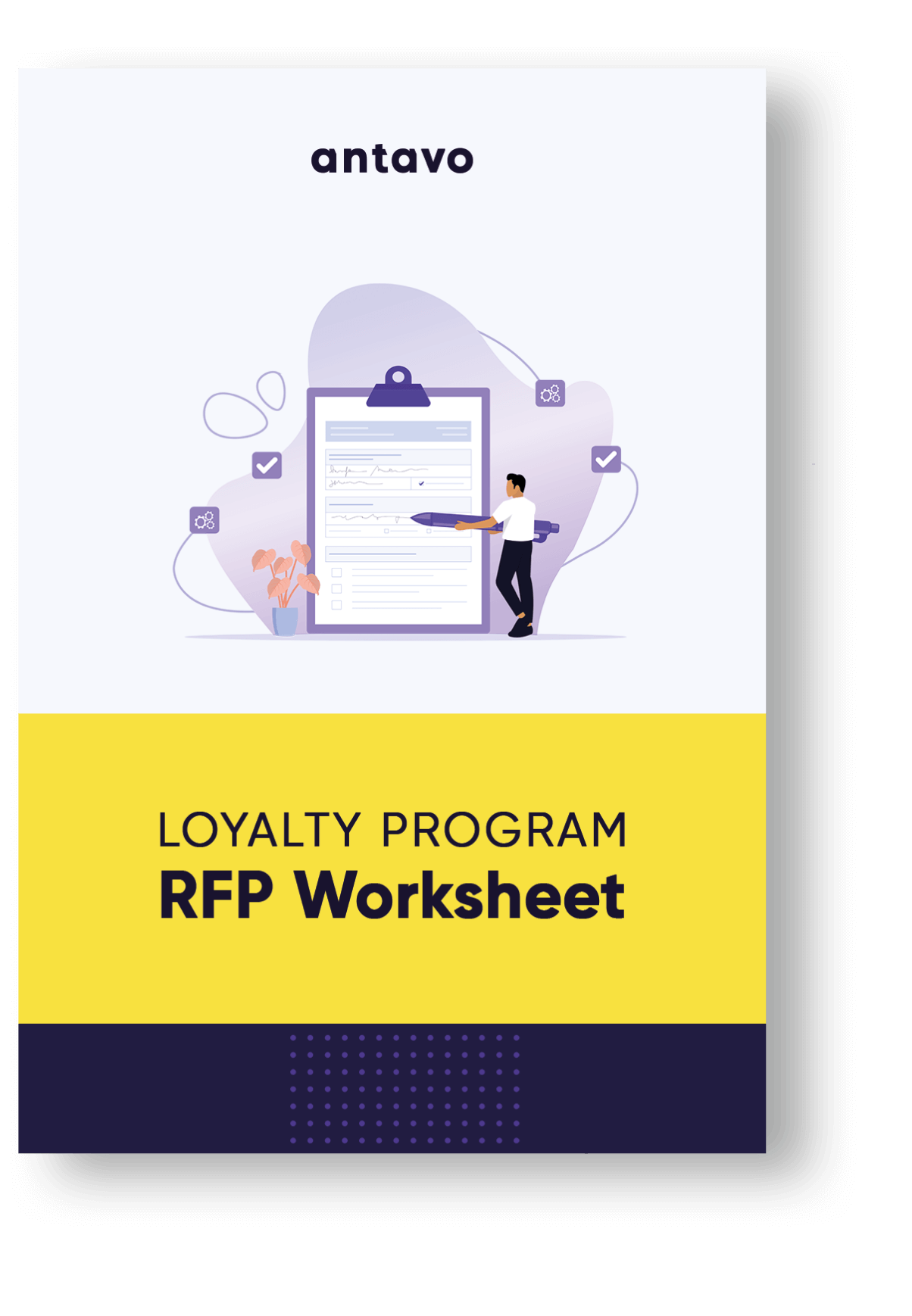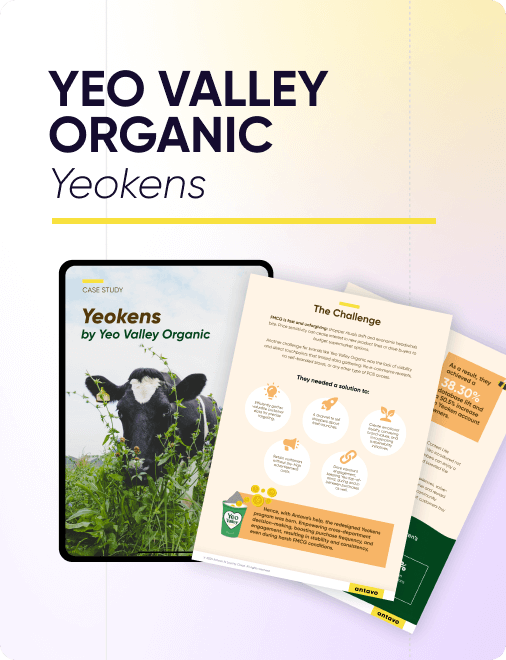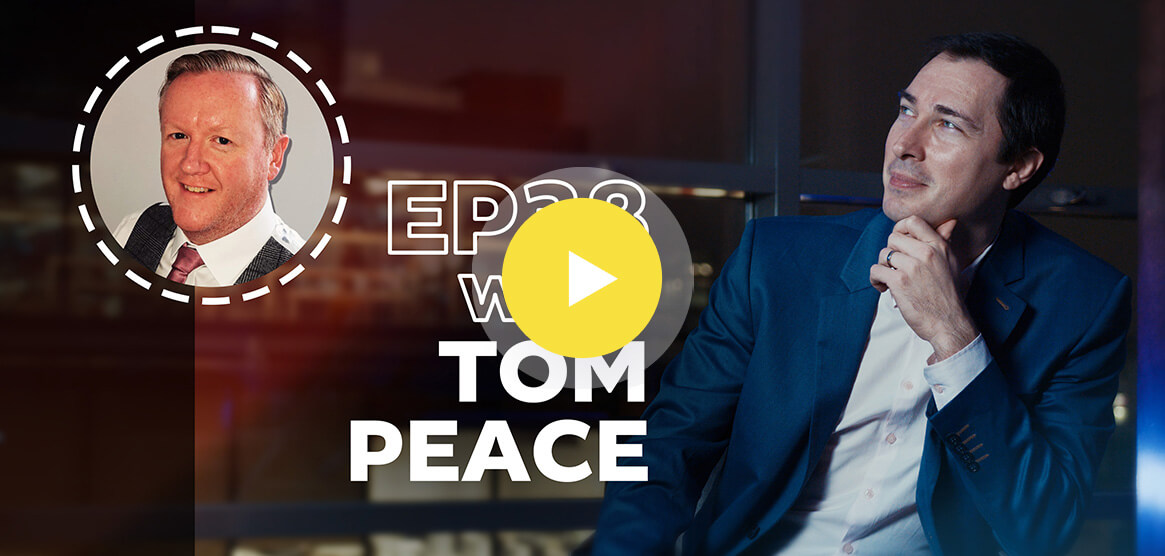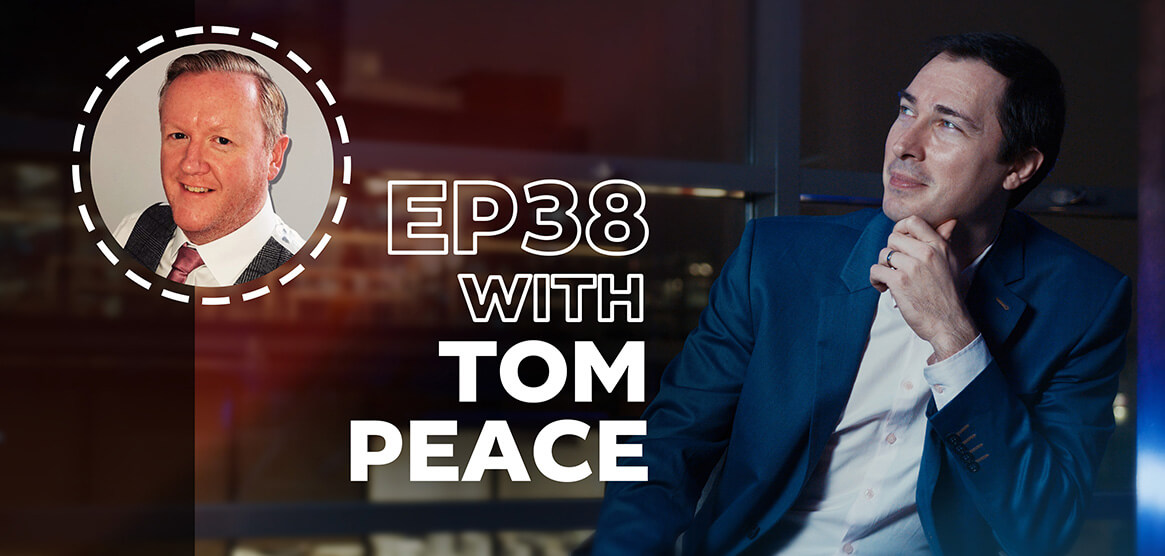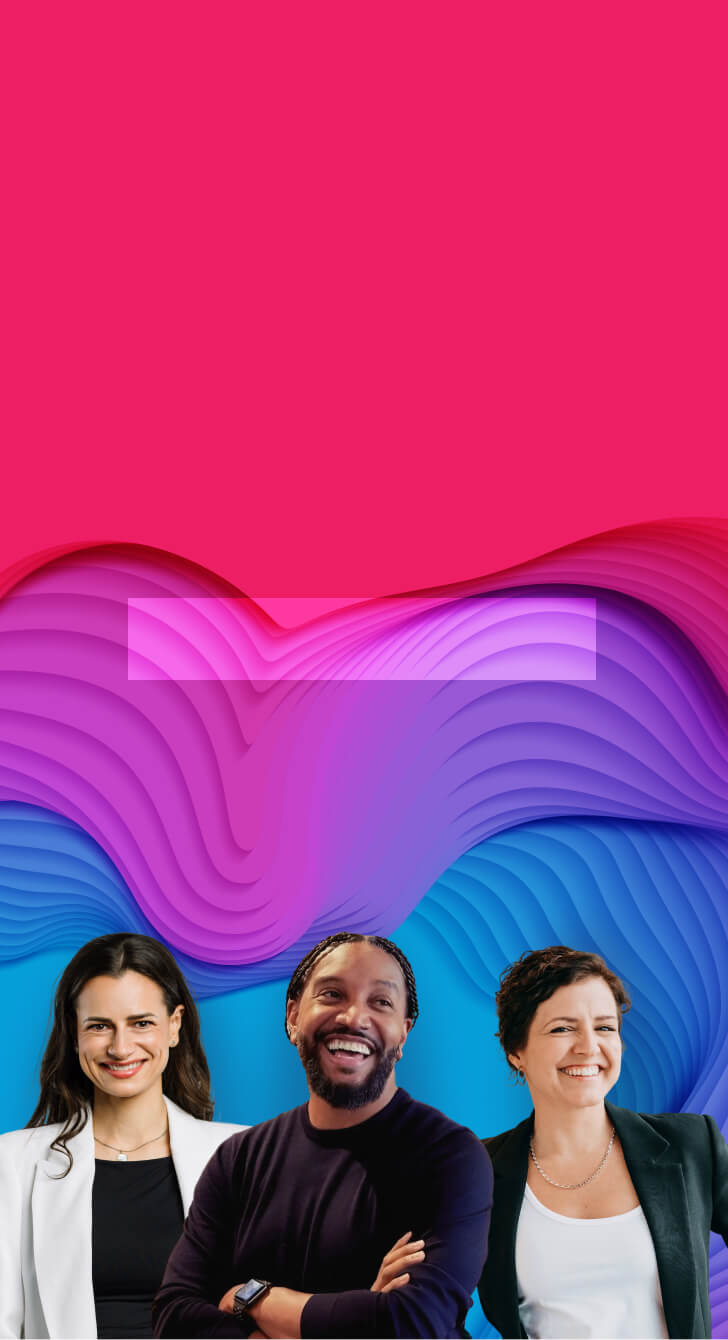On this week’s episode of Antavo’s Loyalty Stories video podcast, we feature Tom Peace, Managing Director at The Loyalty People.
The interview for this podcast has been a valuable source for Antavo’s Global Customer Loyalty Report 2024. Make sure to download it for over 30 statistics on loyalty program trends.
During this episode, Tom emphasizes the value propositions of Avios, his favorite and most frequently used loyalty program. He also discusses recent trends, such as subscription-based programs, upcoming impactful trends in the loyalty industry like dynamic segmentation, and the importance of data in creating customer relationships.
Highlights from our conversation with Tom:
- The reason why hyper-personalization is key in loyalty
- The future of community-building programs and NFTs
- Why technology providers should focus on instant gratification and data analysis
- Challenging loyalty projects he is proud of successfully
Learn more:
- LinkedIn profile of Tom Peace
- The Loyalty People website
- Learn more about Tom Peace’s opinion on Marketing Strategies Using Psychographics
- Book a demo with Antavo’s loyalty experts
Gabor
Hi and welcome to Loyalty Stories, that is Antavo’s podcast on loyalty programs and customer loyalty. I am Gabor Vigh, one of the Partnership Managers at Antavo, and Antavo is a technology vendor that powers loyalty programs all over the world. We help various great businesses such as KFC, Benefit Cosmetics and well-known global automotive fashion companies and airports and so on.
In this Loyalty Stories podcast, we dive into the trends around loyalty programs and customer loyalty. We talk with industry experts around the world to pick their brains to learn what’s next for loyalty programs. Today’s guest is a special person to me, as he was one of my tutors at the CLMP training, where I got certified in March 2023.
Please welcome Tom Peace, the Managing Director and Customer Loyalty Expert from The Loyalty People, a consultancy firm where Tom and his team create and implement best-in-class loyalty, CRM and customer engagement strategy on a global scale.
Hi, Tom, how are you doing?
Tom
Hi Gabor, I’m very well thank you, it’s a pleasure to be here, thank you very much for having me on.
Gabor
Thank you very much for accepting the invitation. Before we go into and discuss loyalty more in depth, would you mind briefly introducing yourself to the audience?
Tom
Sure, yeah, I am Tom Peace. I have worked in the loyalty industry for more years than I’m willing to admit on a recording, but many years. And I run a company called The Loyalty People. The Loyalty People, as you really gave a really lovely introduction, thank you, Gabor. We provide loyalty consultancy. We help our clients to build out customer strategy.
That could be loyalty program design, CRM optimization, market research, business casing, anything within that field. We also run a global community of loyalty professionals. It’s free to join and you, as a member of the community, you would get lots of interesting things about the loyalty industry.
So latest news, partner updates, insight, expert opinion, all those sorts of things are available via email, LinkedIn, and on our website. So yeah, so that’s us. We’ve been going now for about three and a half years, and we’re growing steadily, and we’re very pleased.
Gabor
Great, thank you Tom. Yes, I think since the very beginning we do have a fruitful cooperation between the two companies, so it’s an extra great reason why I’m very happy to have you on today’s call.
Just as like a warming up question really, this is kind of like an expected question from our viewers and gets into the topic very nicely. What is your favorite loyalty program and why?
Tom
Oh, yeah, I’ve been thinking about this. So the program that I use the most is Avios. I’m a big Avios hoarder. It’s a value proposition for me. It’s an old school value proposition. I will collect as much Avios as I can, and then I will use those to pay for or part pay for a holiday. I have an Amex credit card. I fly BA whenever I can. I go on the BA website at Christmas and try and collect as many points as I can on Christmas presents.
I’m a real hoarder, but it really is a value proposition. In the marketplace, as a loyalty professional looking at what’s out there, I’m a little bit obsessed with what Duolingo are doing at the minute. I think what they’re doing is really clever because I’m, I don’t use it. I’ll be honest. I don’t use it. I’m not much of a linguist.
What I’m fascinated about there is the fact that they’ve turned their solution into a gamified loyalty program effectively. So very much like Snapchat, what they do is they’re looking to create streaks. So you can boost your XP or your experience points by getting streaks of using the tool every day. So every day that you use it, you collect more and you don’t wanna lose that streak.
They’ve now got people that are using it every day for many, many time, and what I think they’ve done there is whereas we tend to talk in the loyalty industry about gamification being maybe little bits of interaction. So it could be spin a digital spin the wheel game, or maybe a virtual treasure hunt around a shopping mall or things like that, and they’re fun and they’re engaging and they’re another way for brands to collect data.
But they don’t really tap into the psychology of gaming in the that we have in say computer gaming where computer gaming, it’s easy to pick up the game, but it’s really hard to master. So by the time you’ve killed that end of level baddie or you’ve won the football tournament or you’ve won the race, you’ve invested a lot of time and you feel this feeling of euphoria when you finally do get to the end of the level or the end of the game or whatever.
And what I think Duolingo are doing is actually creating that kind of habit, that kind of addiction by getting people to really, really want to do it every day. That, you know, they’re up to a streak of 200 days. They do not want to miss a day. So they’ve created that kind of traditional gaming, video gaming, kind of gamification and psychology. Duolingo have brought that into this learning experience.
And the other thing that’s really clever is that people these days, we’re not so much about just earning points. We want other things. And one of the other things that’s very important, especially for the younger generations, is self-improvement.
So Duolingo, it’s about self-improvement. It’s about, it’s a gamified solution and it’s very, very clever. So I think that is my favorite as a professional in the industry, not a user. But that is my favourite at the minute.
Gabor
Oh, thank you Tom, it’s very interesting that you said that, but I completely agree, because I have almost 1200 days of streak on Duolingo. Not at all, yes. So I tried to do all the magic just to be in the game, you know, and yes, it’s really working.
Tom
There you go, you see, you do not want to lose that streak, right? Yeah, good, yeah. It’s a clever scheme.
Gabor
Not at all, yes. So I tried to do all the magic just to be in the game, you know, and yes, it’s really working.
Tom
Yeah, good, yeah. It’s a clever scheme.
Gabor
Tom, you have worked on many different kinds of projects. Amongst all, what would be your favourite one? What is the most proud implementation or program that you launched and why?
Tom
Well, do you know what? I’m very, a slightly humble brag, but I’m very proud of the Loyalty People. We have built a really, I think, quite an innovative business. We’re providing lots of really interesting content for people within the industry, and we are getting really strong feedback on the strategies that we’ve implemented. And we’ve done that through some quite difficult.
So a pandemic followed by an economic slump. So I’m very proud of that. But from a point of view of a loyalty program that we’ve implemented, I think possibly I’ll work with Papa John’s Pizza is one that I’m really proud of. So for those guys, their challenge was big. So they are a franchise business. So in a lot of countries around the world, I think in almost all of them, they’re not actually interacting with the consumer directly.
It’s through a franchise. And every country has a very, very different need state. What they wanted was a unified program across 35 different countries. So every country had to have their own levers they could pull so they could personalize it slightly for their customer need. But it had to be the global program administered centrally. So that was challenging, but we did it and we’re very proud of that one.
Gabor
Sounds very interesting, thank you Tom. And what do you think, what are the big changes in the loyalty industry in the recent years? There’s been a lot of things happening, you know, in the past, even in just like two years. So I guess there must be a lot.
Tom
Yeah, so I think there’s been a lot of innovation over the last few years, half dozen years, there’s been a lot of innovation in the space. So we’ve seen subscription type loyalty or paid for loyalty emerging. I mean, it’s always kind of been there, but that’s become much more prevalent. We’ve had gamification, experiential design, we’ve had ESG making impacts on loyalty, we’ve had lots of different innovation.
But I think actually they’re actually the symptoms and not the cause. What I think is the cause is that we don’t think about loyalty in the same way that we used to. People are changing. So if we go back 15, 20 years, maybe even 10 years, it was just all about the value. It was, I shop here because I get points, or I fly with this airline because I get points.
And those points had value. But due to the proliferation of those types of schemes and also just people wanting different things, it started to change. And I think people now, they’re not willing to wait. We don’t want to shop at a supermarket for 12 months before those points are valuable. We want our rewards to be instant, which has led to more subscription-based. People are willing to pay a subscription if they get the benefits straight away.
I think gamification really is driven by an omni-channel or an online, the technology is helping with that element. And experiential design is all really about people wanting an emotional connection. So it could be an emotional connection around a shared belief or an ESG consideration, or it could be many other different types of thing. And I think we’re going to come on to experiential so we won’t go into too much detail.
But essentially, I think what’s driving the change in loyalty recently is a big change in people’s requirements for loyalty, including how personalized the messaging and the offers are. And really, I think hyper-personalization is just table stakes for loyalty these days. You have to do it. You’re so far behind if you don’t, that is kind of where you almost need to start. So yeah.
Gabor
I completely agree with you Tom. And what do you think, what will be the two main fresh loyalty trends in program strategy in the next couple of years?
Tom
So I think everyone that I’m talking to at the minute is all talking about subscription. I mean, it works so well for brands, but I don’t really think that’s a fresh trend. I think that is a trend that sort of started four or five years ago. The Amazon Prime was kind of the first big person to do it. We’re now seeing coffee shops do it. Everybody is getting involved in a subscription based loyalty solution.
And it’s a good solution. There’s loads of reasons why you would do that. But I wouldn’t say it’s a fresh trend because it will continue to grow and emerge, but I wouldn’t say it’s new and fresh. What I think is gonna happen over the next couple of years, the first one, I think is community.
So using the data, collecting more first party data and using the data that brands have got already, they can start to create communities within their program. And brands that do this really well, someone like Strava is really good if you’re a fitness fanatic.
If they know that you cycle and run, then they will talk to you about those things. And that’s the most basic level of community. They won’t talk to you about swimming and boxing and rugby because they’ve never seen you do any of those things. And that’s a very simplified way of doing it. But then what Strava have done is they’re creating new communities.
You can create a local running group. Or if you just go out running in your local area, you can see who else is running that route and what times they’re doing. And that sort of level of community will start to evolve in all programmes, I think. I think that’s gonna be very big.
So that people not only can feel part of an airline programme, but they can feel part of a group within that airline programme that is similar.
There may be holiday makers or business travelers or whatever. The communities can be very small and very granular and that I think is gonna be a big trend for the future. I also, I’m still not sure about NFT.
I’m still on the fence here. So it felt like about a year ago, Starbucks launched it, a few others launched it. Everyone was like, NFT is gonna be enormous and then nothing happened really.
And now just recently we’ve started to see a few brands start to engage with this.
Lufthansa I think put an announcement out a few weeks ago about their new NFT based scheme, which I must admit I haven’t read up on in detail yet, but I think there is something around the NFT. Now, I feel that this is still a bit niche. It always gets compared to fine art, but most of us don’t collect fine art.
That is a niche thing. And I just wonder if collecting NFTs is also niche and if it is niche, how successful will it be in loyalty, which does essentially have to be quite, quite mass appeal. So NFT, I think things are going to happen over the next few years with NFT. Whether it will be successful, I’m on the fence.
Gabor
And how do you think these trends will evolve if you pull up your crystal ball of loyalty?
Tom
How do I think they’ll evolve? Yeah, so I think, I just think community, brands will start to use community to talk to people. It’s all about the hyper-personalization and the data. So they will want to know, brands should want to know, okay, not only how often this person buys or shops, but they also need to know who they are, why they’re shopping, who they’re buying it for.
If they knew all that information, if they knew that every year this person is buying a gift for their wife, then they can talk to that person in a very relevant way. And that’s part of the hyper-personalization. But if they then knew what that person’s interests and hobbies were, or even the interests and hobbies of the person they’re buying for, they could create these smaller communities.
So any brand, there may be any number of reasons why somebody might engage with a brand. Could be for health reasons, could be because it’s new technology and they’re an early adopter, could be a price thing, could be because they feel that the brand aligns with their personal beliefs. There could be lots of different reasons why. Could just be convenience.
But they need to find that out and then talk to people about those like interests or liked hobbies, et cetera. And I think that is where brands will start to evolve, not just in terms of hyper-personalization, but almost putting people into dynamic segments.
And the brands that can do this really well would probably be banks, maybe grocers, because they have the wealth of data. And you could potentially be in multiple dynamic segments. You could be a retiree and a foodie and a sport lover, and then you can start to talk to people about all these different life stages, interests, hobbies, etc.
NFT, I’m not so sure how that’s going to evolve. The case studies that I’ve seen talk about operational benefits. Like, I was speaking to a guy a few weeks ago and he was saying, oh no, NFT is going to be great for loyalty. Imagine if you’re a football fan, you can now get your ticket as an NFT on your phone. And if you can’t go to the match, you can send that NFT to your father and your father can go and take your seat.
But because it’s an NFT and it’s secure, et cetera, they can’t share it with anyone else. It can only be used once by one person at the match. And I was like, yeah, but that’s an operational solution. That’s not a loyalty solution. So I’m yet to fully understand how NFT evolves for loyalty. I think a very small base will love it because they will want to collect these unique digital artifacts.
But that is only a niche of most loyalty bases. So I’m yet to understand fully how that’s gonna work, but maybe there’s somebody out there, it’s a bit more of an NFT expert, who can explain it to me. And if they wanna get in touch and let me know, I’d love that.
Gabor
Sure, sure. Thank you Tom. And in your opinion, how a loyalty program technology company could or should support this? What are the main features to have? There are lots of different things that you mentioned like gamification, getting ready for emotional loyalty, easy to use and so on.
Tom
Yeah. Well, I mean, for me, it’s still it always has been and it always will be all about the data. So what I think brands or partners, technology solutions within the law or service providers within the loyalty space, they need to be thinking about how you collect the data and then use the data. It’s all right collecting lots of data, but how do you easily and instantly access that data and be able to use it to inform change.
So it might be that you use it to analyze and think and then repurpose or replan, but also it needs to be, it needs to be kind of instant event triggers. But based on all the data you can collect. So it is now possible to collect lots and lots of data. You know, the third party data issues, et cetera, that we had a few years ago.
We understand how to get around that. We’re collecting first party data. There are lots of ways to collect first party data through social media, through gamification, through questionnaires and polls, and traditional just purchase behavior data, how they use your site, how they react to emails, et cetera, et cetera. There’s lots of ways to gather data, but once you’ve gathered it, how are you gonna use it? And that feeds back to the hyper-personalization in the community.
Can you start to drop people into dynamic segments that then trigger certain activities when that person does a thing? And I think that’s where brands need to get. One size fits all is so like 1990s. We’ve now got to really strive to be talking to the consumer in a very, very dynamic way. So yeah, I think there’s lots.
Technology brands, they need to have gamification options, they need to have potentially community options, they need to be able to do experiential design, it’s not just about points anymore, there’s got to be other ways to earn and burn, rewards, partnerships, et cetera, but it all comes from the data. So you need to be able to gather data, lots of it, and then process and interact with the data kind of instantly.
Gabor
Great, thank you so much Tom. Is there anything else that you have in mind that you wanted to share with our audience?
Tom
I don’t think so. No, I think the questions have been very good. I, and I look forward to, I look forward to seeing what the future will hold. Maybe I’m wrong. Maybe there’s something else around the corner, but, you know, I think, I think gamification also could be quite big. I think what needs to happen with gamification is more brands need to think like Duolingo.
I think that you, or not you, but I think that brands don’t want to have friction in loyalty. So as a program manager, we’re trained and told, take all the friction out of the customer journey. So then when we do a gamification, we just want it to be quick and easy and, and everybody wins something, et cetera.
So we come up with things like digital spin the wheel and people have a quick go and they win a five pound off or they win a free starter or free bag of popcorn or whatever. And they’re like, yay. And that’s fine. But actually there are a few brands like Duolingo who are taking it to the next level.
They’re really thinking about, okay, well what’s the psychological threshold that is really going to engage somebody? And like you said, you’ve got 1200 days. So that’s nearly three years. Is it? Four years? Is that nearly, how many years?
Gabor
It is more than three years, yeah.
Tom
Yeah, so it’s like three and a half years you’ve never missed, doing a quick lesson on Duolingo. This is incredibly powerful, but that is difficult to do. There’s probably not many people like you out there like you, Gabor.
Gabor
Yes, I see less and less in the board, the leaderboard.
Tom
Wow, really? Yeah, wow. So yeah, so brands need to think slightly differently about gamification as well. They need to start thinking about, there’s two types. There’s the kind of quick, fun, instant win thing. Nothing wrong with that. Good way to collect data. Good way to engage the customer when they’re not in the purchase cycle.
There’s loads of reasons why you would do that. But then there’s this extra layer of gamification. It’s much more complicated layer of gamification, which is full of friction. But it’s full of friction for the right reasons. And that’s where a lot of brands need to start thinking about gamification.
Gabor
Great, all right. Thank you so much Tom. Thank you for being here and sharing your thoughts. I really enjoyed our conversation and listening to your point of view about loyalty.
Tom
My pleasure, thanks for having me on.
Gabor
Thank you so much. And yeah, my favorite topics… And yeah, I didn’t just have one. Definitely. I really enjoyed the Duolingo one because I could relate to that. And I know exactly what’s there, but also I was really happy to hear you talking about the emotional connection, creating
communities or this emotional connection around the common use case, like an ESG initiative and supporting brands with instant rewards. I think this is very common for Gen Z and the millennial generation that they don’t want to wait, they want to have these things.
Tom
Yeah. Well, yeah, that’s a good point. Like the younger millennials, the Gen Z, et cetera, have sort of led the way in that. And brands that create experiential campaigns or programs win with those customers first and most because those customers are looking for experiences and self-improvement and ESG alignment and all those sorts of things. But actually.
I think we all are a little bit. We’re all becoming a little bit Gen Z. Even old people like me are becoming a bit Gen Z. We do start to think, oh, that retailer recycles, or that brand supports a cause that I like, and that does sway you a little bit. So we’re not perhaps, we’re not perhaps as, in my generation, we’re not perhaps as focused as the younger generation.
But we are all starting to think like that. And that’s where an experiential program that provides kind of exclusives and really strong content and tutorials and maybe really credible alignment with ESG can really win. It’s got to be credible. Any greenwashing and you are in deep trouble.
Gabor
Thank you so much Tom. And for the viewers wherever you listen to us, be it on a podcast platform, YouTube or LinkedIn, please like this podcast and subscribe to our channel so by this way you will get a notification about our next episodes. Also tell us about your view on loyalty in the comment sections below. Visit antavo.com to discover your next loyalty software.
Don’t forget, Antavo is a next-generation loyalty program technology vendor used by global companies like KFC, Benefit Cosmetics, Global Automotive, and fashion companies and airports all over the world.
And also, visit the Loyalty People’s website, theloyaltypeople.global, or Tom’s LinkedIn profile to find out more of his exciting work details.
Thank you very much, and see you on the next one. Bye for now.
Tom
Bye, thank you.
